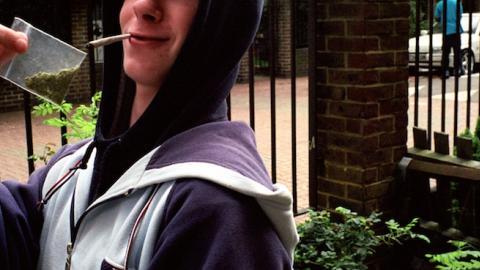Oklahomans have something new to be proud about. Only 5.5 percent of Oklahoma youth between 12 and 17 years of age are “current users” (having used in the past month) of marijuana, compared with the national average of 7.2 percent, according to the most recent survey.
That's the good news. The bad news is that the percentage is much higher in neighboring Colorado where, as an Oklahoma lawsuit against that state has shown, “legalization (of marijuana) has created a dangerous gap in the federal drug control system.”
The notion that Colorado's first full year of commercial, “recreational” marijuana production and sales — in violation of federal law — is some sort of “experiment” has been embraced by President Obama (whose administration has enabled the development), candidate Hillary Clinton, and others in both parties. Given what's at stake — mental health, educational outcomes, family well-being, and even future policy decisions in other states — an accurate accounting is essential.
A major new report from the National Household Survey on Drug Use and Health (NSDUH) with combined two-year data (2013-2014; a sample size sufficient to give a picture at the state level) presents the reality of marijuana use for the first time since the legal roll-out.
The data are devastating to the marijuana “experiment.”
Use is up in Colorado, and has been rising steadily every year since 2009. That date matters not only because it marks the end of Bush administration policies that fought back against — and lowered substantially — teen marijuana use, but because that year saw a major expansion of the state's medical marijuana program. Medical marijuana drives up teen use; legalization drives it up even more.
To anyone paying attention, this rise is not surprising. Recent data have clearly shown increases in marijuana use, including adolescent use, in states that have adopted either so-called “medical marijuana” programs, or have liberalized access to the drug. Colorado has recklessly done both, and the latest data show that it has the dubious distinction of being the national leader in youth marijuana use.
A realistic assessment of impact, from 2009, shows a stunning rise of 27 percent by 2014 (from 9.91 percent to 12.56 percent) in teen marijuana use, as well as large increases for those ages 18 to 25. And there is no sign that the rate of increase is slackening.
Lest we think Colorado's rise is something going on everywhere in the country, a comparable rise has not been seen in all states, except those, like Washington, Oregon, the District of Columbia, and Alaska, which also legalized, and now join Colorado in the top eight states. In fact, in states like Georgia, Ohio and Texas, the rate of youth marijuana use is half that of Colorado. Parents should take note.
Moreover, use by those 12 and older, which includes Colorado's young adults, is also steeply up, rising 99 percent in the last 10 years.
According to the proclamations of eager advocates for the legal dope market, this wasn't supposed to happen to kids. In fact, they argued that they were legalizing marijuana with the specific intention to protect the children, since a regulated market would shut down the criminals (which hasn't happened, either) and ensure that young people couldn't get access.
Those aged 12 to 17 are adolescents, ranging in classrooms from junior high to their senior year. These data now show one in every eight Colorado kids is a current smoker of the highest-potency dope in the nation.
Almost weekly, the science grows stronger and more undeniable as to what this drug is doing to the adolescent brain; eight-point IQ loss, potentially permanent impact on memory, learning, cognitive performance, and risk of psychosis; these are but some of the damaging associations with heavy use.
More than 6 percent of high school seniors nationwide are now “daily” marijuana users, says another survey released in December, which also showed that perceptions of risk in using marijuana by high school seniors (“perceived risk” being a major component of effective prevention), has dropped 62 percent since 2008 to its lowest level ever. Obama drug czar Michael Botticelli laid the blame on legal marijuana. For states such as California, facing legalization on the ballot in 2016, voters should know that legal marijuana means an epidemic of teen use and addiction.
Solutions? For starters, one could enforce federal law, designed to push back on this very threat.
Pro-drug legalizers — and their apologists — need to stop denying the science, and the facts before their eyes.
















